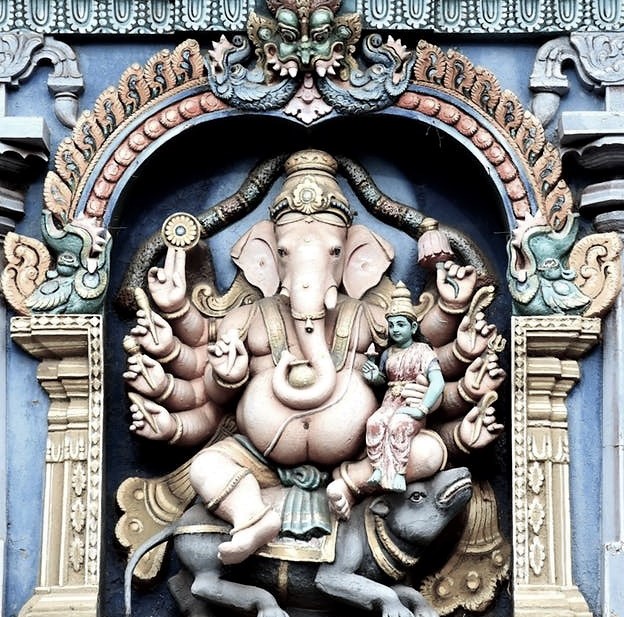- Special FeaturesFoundation Year1223–1224 CESthala TreeTheerthamRathamArchitectureHoysala ArchitectureOther Speciality
- Sthala Puran
According to a Hindu legend, a demon named Guha (or Guhasura) once lived in these parts and a considerable surrounding region, from Uchchangi Durga in the east, Govinahalu in the south, Mudanur in the west and Airani in the north was under his control. Guha successfully appeased Hindu god Brahma with his penance and obtained a boon, by virtue of which, it would be impossible for either Hari (Mohini) or Hara (Shiva) to singly kill him. Guha then became a regular tormentor of gods and humans alike. In order to overcome Brahma's boon and eliminate Guha, Female Vishnu and Shiva together took the form of Harihara (a fusion), came down to earth and killed the demon. The descent of the incarnation on earth is said to be at nearby Kudalur, at the confluence of the rivers Tungabhadra and Haridra
- Architecture
The temple is constructed in a staggered square mantapa (hall) plan, typical of Hoysala constructions. Therefore, the outer wall of the mantapa shows many projections and recesses. The wall of the mandapa is a parapet wall resting on which are half pillars that support the outer ends of the roof (cornice). The ceiling of the open mandapa is adorned with artistic decorations such as lotuses. The ceiling is supported by lathe-turned full pillars. The material used for the temple is soapstone (also called potstone). The original tower over the shrine (Vimana) is missing and has been replaced in modern times with one of brick and mortar. Preserved within the temple premises are several old-Kannada inscriptions and hero stones
- Alankar of Deity
- Prayers and BenefitsSpecial Vratas and PrayersOfferings to DeityStotras and Mantras
- Festivals
- Sodasha Upcharas
- Prasadhas
- Social ActivitiesAnnadhanMarriageEar BoringHead ShaveDanaasEducation FacilitiesSocial DrivesOther Activities
- Arjita Seva
- Tags

